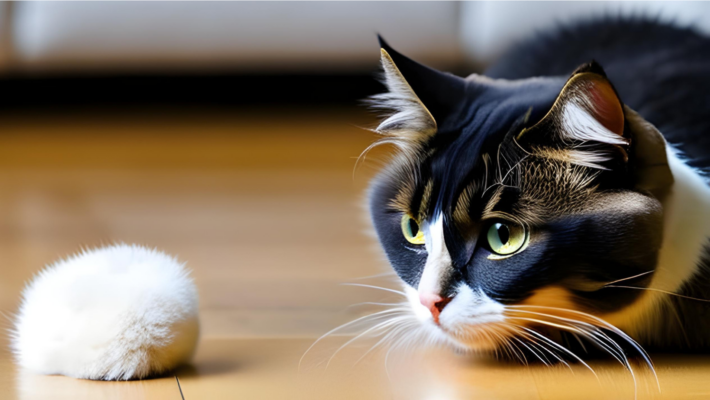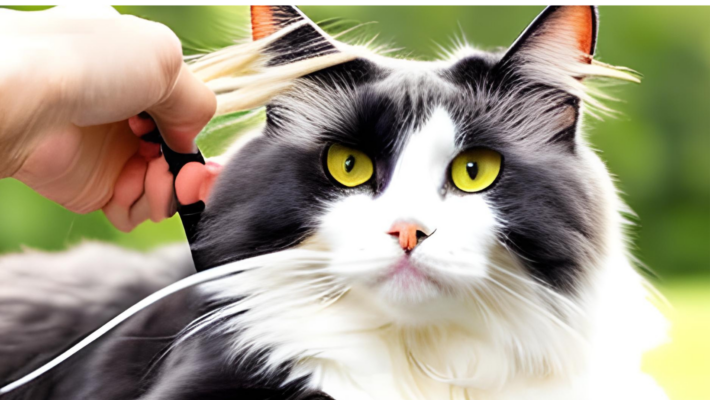Has your cat been hacking up hairballs lately? As a cat owner, you’re probably familiar with the sound of your feline companion retching and gagging as they try to expel a hairball. While vomiting hairballs is normal cat behavior, excessive hairballs can indicate an underlying issue. Read on to learn what causes hairballs, how to reduce them, and when to seek veterinary advice.
What Are Hairballs and Why Do Cats Get Them?
Cats are fastidious self-groomers and will spend up to 50% of their waking hours licking and cleaning their fur coats, often ingesting loose hair or fur balls in the process. All this licking causes loose hair and fur to accumulate in their stomachs. Hairballs form when your cat’s stomach muscles compress this fur into a dense ball, which is later vomited up.
Hairballs are a common occurrence for most cats. However, some cats are more prone to hairballs than others:
- Long-haired breeds like Persians, Himalayans, and Maine Coons have more fur and are therefore more likely to develop hairballs.
- Elder cats tend to groom themselves more as they age, ingesting more loose hair.
- Fastidious groomers who over-lick can also end up with more hairballs.

While vomiting the occasional hairball is normal, frequent coughing, gagging, or vomiting could signal an underlying health issue. Schedule a veterinary visit if your cat’s symptoms persist or worsen.
Signs Your Cat May Have a Hairball
Watch for these common signs of hairballs in cats:
- Coughing or hacking as if trying to clear their throat
- Retching
- Constipation or lack of bowel movements
- Straining to pass stool
- Passing stool with hair in it
- Lethargy
- Weight loss
Excessive vomiting, diarrhea, weakness, or belly distention are concerning symptoms requiring veterinary care. Hairballs can cause dangerous intestinal blockages if left untreated.
6 Ways to Help Your Cat Pass Hairballs
While you can’t eliminate hairballs completely, you can reduce their frequency. Here are some tips:
1. Brush your cat daily
Regular brushing helps remove loose hair before your cat swallows it during grooming. Focus on areas they lick most like the belly and back.

2. Consider professional grooming
Regular professional cat grooming and deshedding treatments can help reduce excessive fur shedding, matting, and hairball problems for long-haired breeds like Himalayans, Persians, and Maine Coon cats.
3. Give hairball relief supplements
Hairball remedies containing petroleum jelly or other lubricants can ease the passage of hairballs. Ask your vet which product is best.
4. Increase fiber in the diet
High-fiber cat foods add bulk to stools, allowing hair to pass through more quickly. Gradually transition to a high-fiber diet.
5. Discourage overgrooming
Reduce stress and anxiety to curb excessive grooming. Make sure your cat’s environment is stimulating and comfortable.
6. Schedule annual vet exams
Your veterinarian can check for underlying issues like parasites, food allergies, gastrointestinal diseases, or other health problems that may be causing your cat to excessively groom and swallow hairballs. Annual exams keep your cat healthy.
While these tips can help, immediate veterinary care is required if your cat stops eating, seems lethargic, or shows signs of an intestinal blockage.
When to Take Your Cat to the Vet
Contact your veterinarian if:
- Your cat is vomiting frequently or appears to be straining to vomit
- Appetite decreases or your cat stops eating entirely
- Significant weight loss occurs
- Lethargy, weakness, or depression develops
- Diarrhea or constipation persists for over 24 hours
- Your cat cries out in pain when defecating or eliminating hairballs
- Abdominal swelling or bloating is present
Severe symptoms can indicate a dangerous intestinal blockage, so don’t hesitate to call your vet. Hairballs that don’t pass can back up in the intestines and require emergency surgery. It’s always better to be safe than sorry.
By staying vigilant and responding promptly when symptoms appear, you can keep your cat happy and healthy. Pay attention to changes in appetite, energy level, and litter box habits. With some care and preparation, those unpleasant hairballs don’t have to be a huge hassle. You and your cat can both rest easy.

